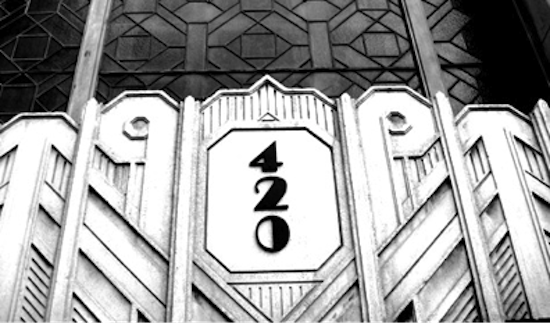Ellensburg's Art
Deco Bank was Built by Carl F. Gould
Ellensburg, Wash. (May 11, 2007) — One of downtown
Ellensburg's most stunning buildings, built by world-renowned architect Carl F.
Gould (1873-1939), will undergo restoration over the next several months.
The
stately, three-floor Art Deco building was constructed in 1930 by Gould, who
also created many buildings on the University of Washington's campus, including
Suzzallo Library, Anderson Hall, the Penthouse Theater and the Henry Art
Gallery. He also founded the university's School of Architecture.
The
building's owner, former Ellensburg Mayor Mollie Edson, recently purchased the
building, and plans to bring it back to its original glory. Gould's daughter,
Seattle resident Anne Gould Hauberg, is a strong advocate for building restoration,
and was enthusiastic about Edson's project.
“We
need to treasure what we have,” said Hauberg “I'm excited about this. There
were a lot of good architects out there, but he really had the extra touch. He
had good sense, and good design.”
That
good design was brought to Ellensburg and still stands on the corner of Pearl
Street and Fifth Avenue. The imposing stone building began as a simple brick
structure, constructed in 1886, to house the
Ellensburg National Bank.
In
1911, the impressive Farmer's Bank, now
known as the Land Title building, was constructed on the opposite corner. It
too was made of brick, but its facade was covered in elaborately-carved Tenino
sandstone, which gave the bank a stately look.
That's when the Ellensburg National
Bank's owner, Ben Snipes, decided his bank needed to be as impressive as its
neighbor.
“He
was keeping up with the Joneses,” said local historian David Wheeler.
Snipes
hired Gould, who had made a name for himself throughout the region after
designing many buildings, such as the Seattle Art Museum, the Times Square
Building and the Administration Building at the Hiram S. Chittenden Locks in
the Ballard area.
What
Gould created was indeed impressive. The bank, made of stone blocks, still to
this day has expansive, multi-story windows, detailed stonework on the outside,
as well as classic, Art Deco woodwork inside.
But
when the U.S. economy began to fail, the Ellensburg National Bank went out of
business. By 1938 the city of Ellensburg owned it, and for the next 67 years it
functioned as City Hall.
As
the years progressed, a middle floor was added to accommodate the increasing
number of employees. The mezzanine that once loomed over the first floor was
removed and the massive windows were converted into walls.
When Edson purchased it in March, it was “such a sad
building on the inside,” she recalled. “The place felt dark and stifled. The
city had remodeled and remodeled and wedged as many people as possible into an
inadequate space, but it was not the building's fault,” she said. “It was not designed to hold 60 people
working eight hour shifts together.”
Edson
decided the only way the building would thrive as a modern, downtown landmark
was by tearing out the second floor, built in 1954, and also by uncovering the
windows.
“I
just knew how spectacular this was going to be,” Edson said. “Every time we
lift an acoustic ceiling tile we get a better idea of how beautiful this
building is.
I
think it is important for the vitality of all towns and cities, including
Ellensburg, to restore the buildings that make us unique,” Edson stressed.
“They create our sense of heritage and place.”
Now
Edson is looking for renters. On the first floor and mezzanine she envisions a
restaurant, brew pub, gallery or some other type of retail. On the upper floor,
she hopes one single firm of some type will move in. Both floors are 2,100
square feet and the first floor will have 20-foot ceilings.
“I'd
love to see this building thrive again, be filled with people and become a
retail and business hub. It's a great opportunity for those interested in
moving their business into a truly unique place.”
In
order to fully restore it, Edson needs more information. She is seeking the
original blue prints, which have yet to be located. She has gone through all
the logical channels, but without success.
Edson's
also eager to speak to anyone who might remember the building before its City
Hall days, and to those who might have photographs of the building's interior
when it was still a bank.
“Old
photos and recollections will help bring it back to its glory,” Edson said.
She
encourages all business owners or individuals, no matter where their location,
to contact her with ideas for the building's first floor retail future. To
contact Mollie Edson, call 509-925-5638.

